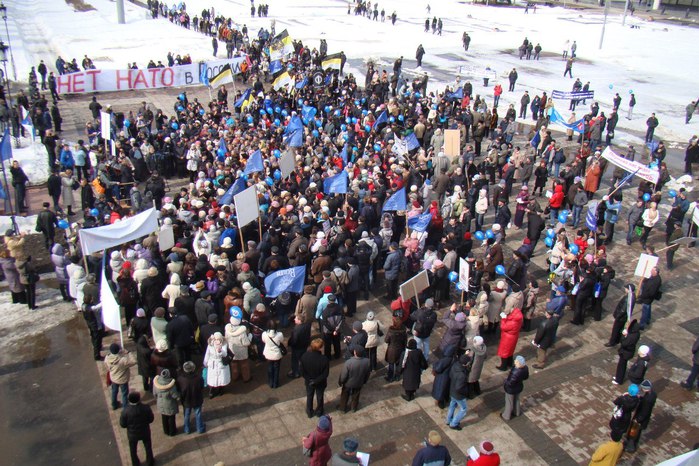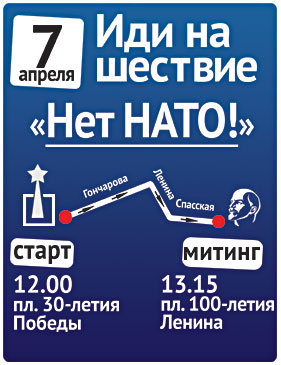-Метк?/strong>
-Рубрик?/strong>
- ~Картинки ?любви~ (460)
- ~Стишки~ (337)
- ~Картинки со стихами~ (249)
- ~Истори??любв?*грустные*~ (210)
- ~Мудрые мысли\ФразЫ\придчи~ (186)
- ~Песни\видео\флешки\кЛипЫ~ (174)
- ~Мо?ИсториЯ~ (149)
- ~темы для обсужден?~ (144)
- ~Авторски?работы~ (133)
- ~ДрУгОе~ (126)
- ~Истори??любв?*счастливый коне?~ (123)
- ~Тексты песен~ (69)
- ~Вопросы\предложения\идеи~ (53)
- ~Знакомства\АнКетЫ\ФоТоГрафИИ~ (35)
- ~СМ?ки~ (33)
- ~Пожелания ПЧелка??сообществу~ (33)
- ~От модеров~ (13)
-Музыка
- Супе?детк? уп?мы?дожд?/a>
- Слушал? 10452 Комментари? 8
- dorozhe_zolota_feat_niyara_-_predatelstvo
- Слушал? 3324 Комментари? 4
-Подписка по e-mail
-Поис?по дневнику
-Интересы
-Пост?нные читатели
-Статистика
любовь_и_романтик? Дожд?..
17-06-2024 00:42 (ссылка)Ставни использовали от шаровы?молний. Многие удив?ют? заче?раньше использовали ставни, ?эт?делалось повсеместн?даже того, когд?уж?активн?использовалась стекло. Отве?содержит? на польском рисунк?17 века из города Любе? На не?изображены ставни, ?которы?приближает? ?отскакивае?то, чт?можн?назват?шарово?молние? ?Европе, ?частност??на Руси, на став??част?изображались неки?шары ?лицами внутри. Считается, чт?эт?Солнце. Однако, друг?верс? гласит, чт?эт?дополнительные рисунк?оберег?от шаровы?молний.
Эт?говори??то? чт?проблема шаровы?молний осознавалась даже просты?населением. Сегодня ?России по некоторы?оценка?шаровы?молнии становятся причиной 40 000 пожаро? ?которы?гибнет окол?1200 челове? Американские исследован? показывают, чт?числ?погибших ?СШ?може?достигат?3000 челове? Хо? дере?нные ставни не способны остановить шарову?молнию, он?способны существенн?уменьшит?ущер?от ее взрыва ил?пожара пр?попытк?проникновения ?до? Шаровы?молнии легк?проникаю??современны?дома чере?вентиляци? розетк??окна. Шаровая молн? проходит сквозь стекло, расплавляя ег? ?част?проходит сквозь него, не оставляя следов. Дере?нные ставни, которы?ка??стекло не являют? проводнико? старалис?делать достаточно толстыми, чт?намног??этом отношени?лучш? че?тонкое стекло. Многие ставни ?внешне?сторон?имел?дополнительные металлически?пластины. По версии некоторы?исследователей, этот элемен?мо?служит?для рассеивания шарово?молнии. По этой же причин?могл?устанавливаться ?задвижки на камины.
На многих здан??Европы ?Азии античности ?средни?веко?есть многочисленные элементы двух типо? металлически?ограды ?различны?пики. Во многих дома?Европы прошлого внутри стен обнаружены металлически?обрешетк? идущие вдол?стен? Большинств?из ни?арматуро?служит?явн?не могу? ??исследователей считае? чт?эт?дв?элемента могл?использовать? для защиты от шаровы?молний. Металлически?ограды ?металлически?контур?внутри помещени?служил?аналогом клеток Фарадея. На рисунках 16-18 веко? на фотограф??19 века на улицах такж?част?встречаются столбы ?решеткам? Пики встречаются на крышах каменных, дере?нных строений ?забора? Встречаются пики ?виде коло?па?тников. Пики играли роль упреждающего разрядник?- предполагает?, чт??период усилен? атмосферного электричеств?он?коронным разрядо? предотвращал?возникновения шаровы?молний. Распространенность этих элементо?говори??то? чт?проблема была очен?актуальной. ?Европе коронный разря?получи?название «с?ты?огней». ?Италии 16 века говорилось, чт?хо? таки?огни выгля??страшн? но он?предотвращаю?появление по наст?щему страшных огне? то есть шаровы?молний. Если святы?огни описываются ка?имеющи?фиолетовый цвет, то боле?страшные огни могл?быть самы?разных цветов, ?эт?призна?шарово?молнии. Шарл?Дюфе пише??шарово?молнии ка??явлении боле?частом ?намног?боле?опасно? че?обычная молн?, ураган ?град. Опасност?он?представ?ли, та?ка?даже ?каменных здан??перекрыт? были дере?нным? ?английской летописи 10 века указан? чт?половина пожаро??Нортумбрии вызывает? «све?щими? шарами? Русски?источник 13 века сообщает, чт??декабр?жители Твер?каждый день видели на небе окол?20 светящихся объектов. Част?из ни?вызывала лесные пожары ?пожары ?дома? Первые издания книг??феномене шарово?молнии французского физика Доминика Араг?включали ты?чи описаний шарово?молнии, большая част?из которы?наблюдалас??ег?время. Последующи?издания включали уж?всег?30 описаний. Очевидно, чт?причиной этог?мо?послужит?стра?пере?этим явление? Сегодня ученными считается, чт?само?раннее описание шарово?молнии было сделан??12 веке, чего, разумеет?, быть не може? Просто ранние многочисленные описан?, например, из Египта ученны?видеть не хо?? Вся история человечества пронизан?сюжето?сложны?взаимоотношени??шарово?молние? Ее отголоск?виды от бу?до елочны?игруше?
Protection against ball lightning in history
Shutters were used to protect against ball lightning. Many people wonder why shutters were used before, and this was done everywhere even when glass was already actively used. The answer is contained in a 17th century Polish drawing from the city of Lübeck. It shows shutters being approached and bounced off by what might be called ball lightning. In Europe, in particular in Rus', certain balls with faces inside were often depicted on shutters. It is believed that this is the Sun. However, another version says that these are additional drawings-amulets against ball lightning. This suggests that the problem of ball lightning was recognized even by the common population. Today in Russia, according to some estimates, ball lightning causes 40,000 fires, in which about 1,200 people die. American studies indicate that the death toll in the United States could reach 3,000 people. Although wooden shutters are not able to stop ball lightning, they can significantly reduce the damage from its explosion or fire when trying to enter the house. Ball lightning easily penetrates modern homes through ventilation, sockets and windows. Ball lightning passes through glass, melting it, and often passes through it without leaving a trace. Wooden shutters, which, like glass, are not a conductor, were tried to be made quite thick, which is much better in this regard than thin glass. Many shutters had additional metal plates on the outside. According to some researchers, this element could serve to disperse ball lightning. For the same reason, valves could also be installed on fireplaces. Many buildings in Europe and Asia from antiquity and the Middle Ages have numerous elements of two types: metal fences and various peaks. In many European houses of the past, metal battens were found inside the walls, running along the wall. Most of them clearly cannot serve as reinforcement. A number of researchers believe that these two elements could be used to protect against ball lightning. Metal fences and metal circuits inside the room served as an analogue of Faraday cages. In drawings from the 16th to 18th centuries, and in photographs from the 19th century, pillars with bars are also often found on the streets. Peaks are found on the roofs of stone and wooden buildings and fences. There are peaks in the form of monument columns. The peaks played the role of a pre-emptive spark gap - it is assumed that during the period of increased atmospheric electricity, they prevented the occurrence of ball lightning with a corona discharge. The prevalence of these elements suggests that the problem was very urgent. In Europe, the corona discharge was called “holy fires? In 16th century Italy it was said that although such lights look scary, they prevent the appearance of truly terrible fires, that is, ball lightning. If holy fires are described as having a purple color, then more terrible lights could be of a variety of colors, which is a sign of ball lightning. Charles Dufay writes about ball lightning as a phenomenon more frequent and much more dangerous than ordinary lightning, hurricane and hail. They posed a danger, since even in stone buildings the ceilings were made of wood. A 10th century English chronicle states that half of the fires in Northumbria are caused by "glowing balls". A 13th-century Russian source reports that in December, residents of Tver saw about 20 luminous objects in the sky every day. Some of them caused forest fires and house fires. The first editions of the book on the phenomenon of ball lightning by the French physicist Dominique Arago included thousands of descriptions of ball lightning, most of which were observed in his time. Subsequent editions included only 30 descriptions. Obviously, the reason for this could be fear of this phenomenon. Today, scientists believe that the earliest description of ball lightning was made in the 12th century, which, of course, cannot be. It’s just that scientists don’t want to see early numerous descriptions, for example, from Egypt. The entire history of mankind is permeated with the plot of complex relationships with ball lightning. Its echoes range from beads to Christmas tree decorations.














